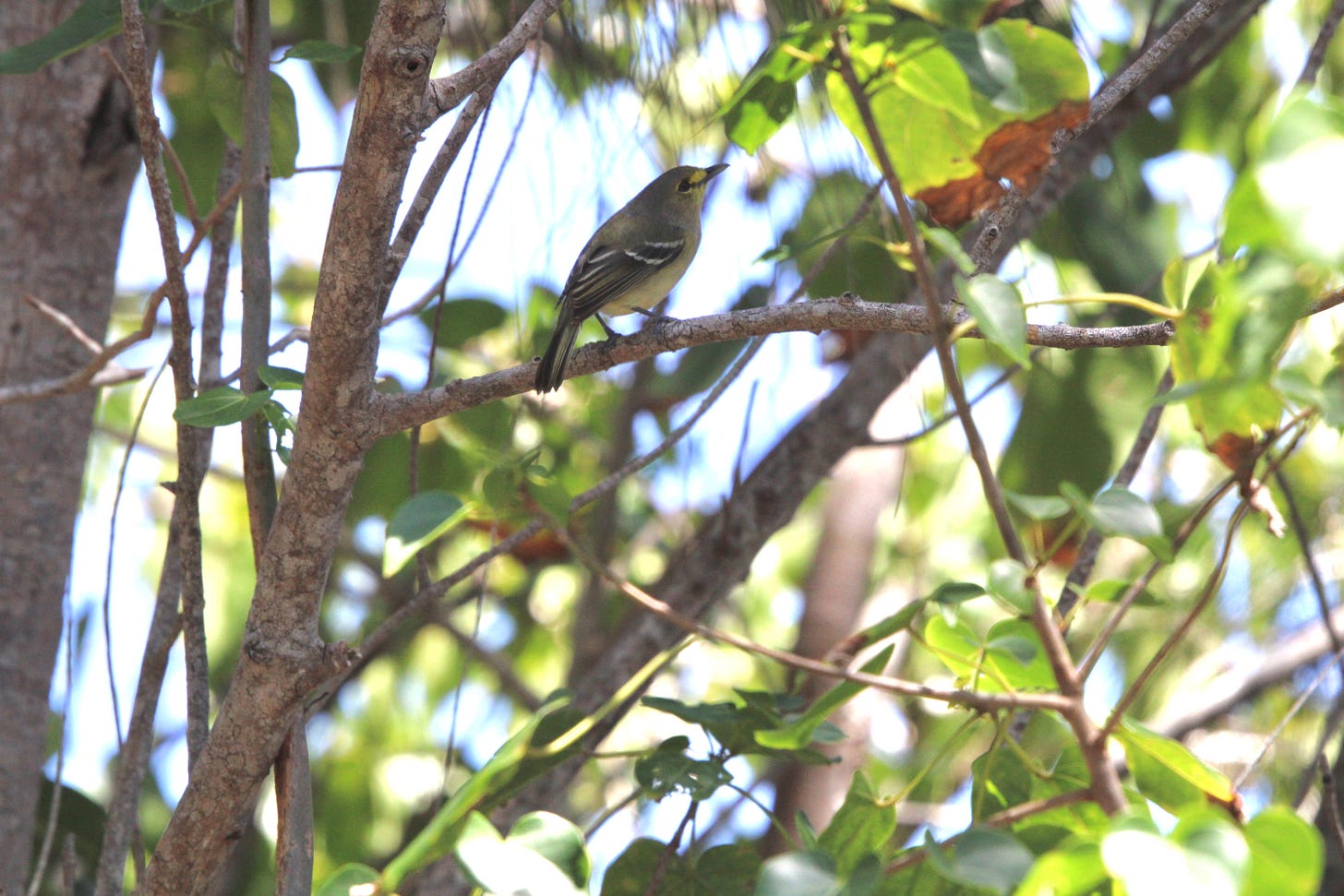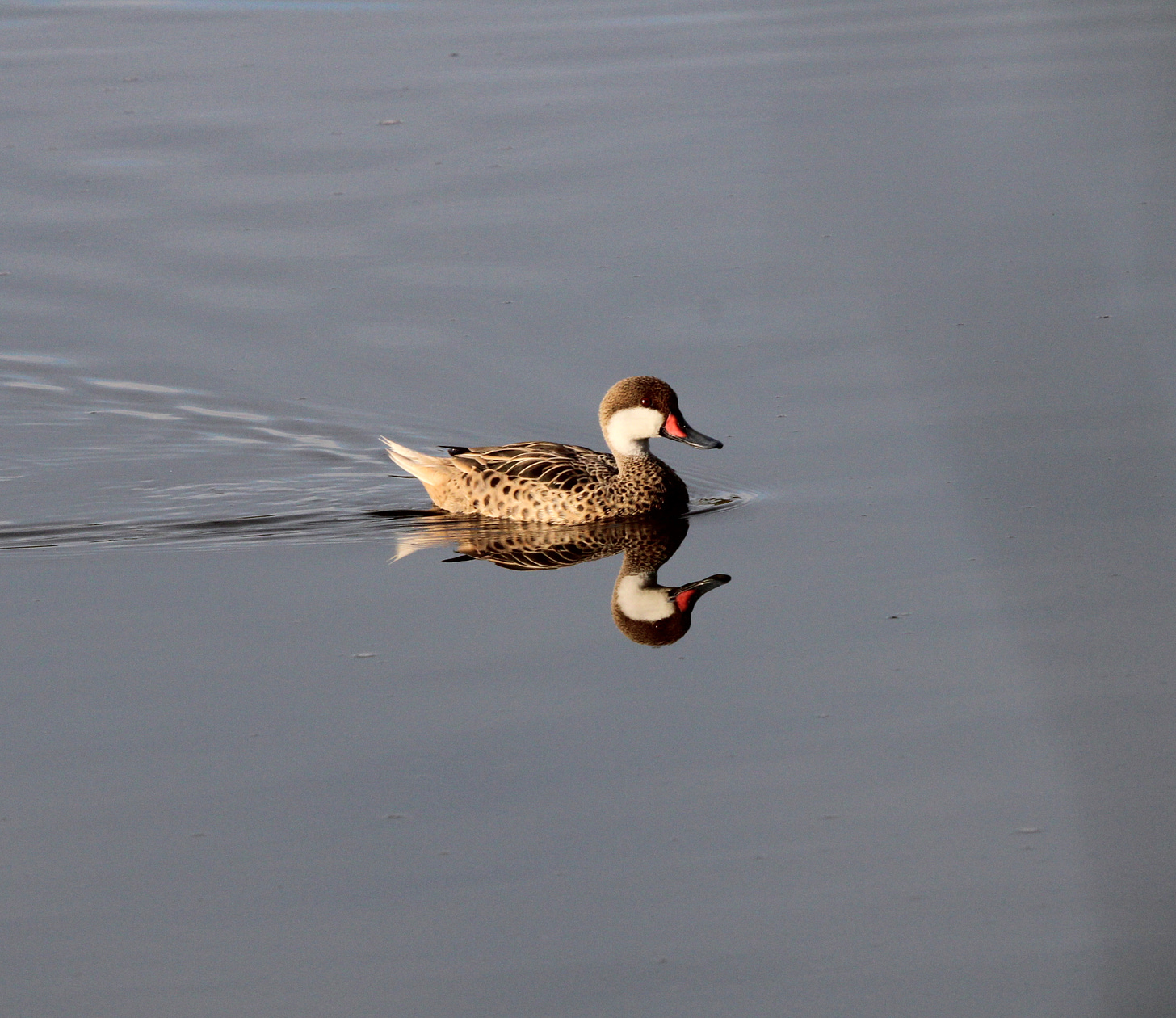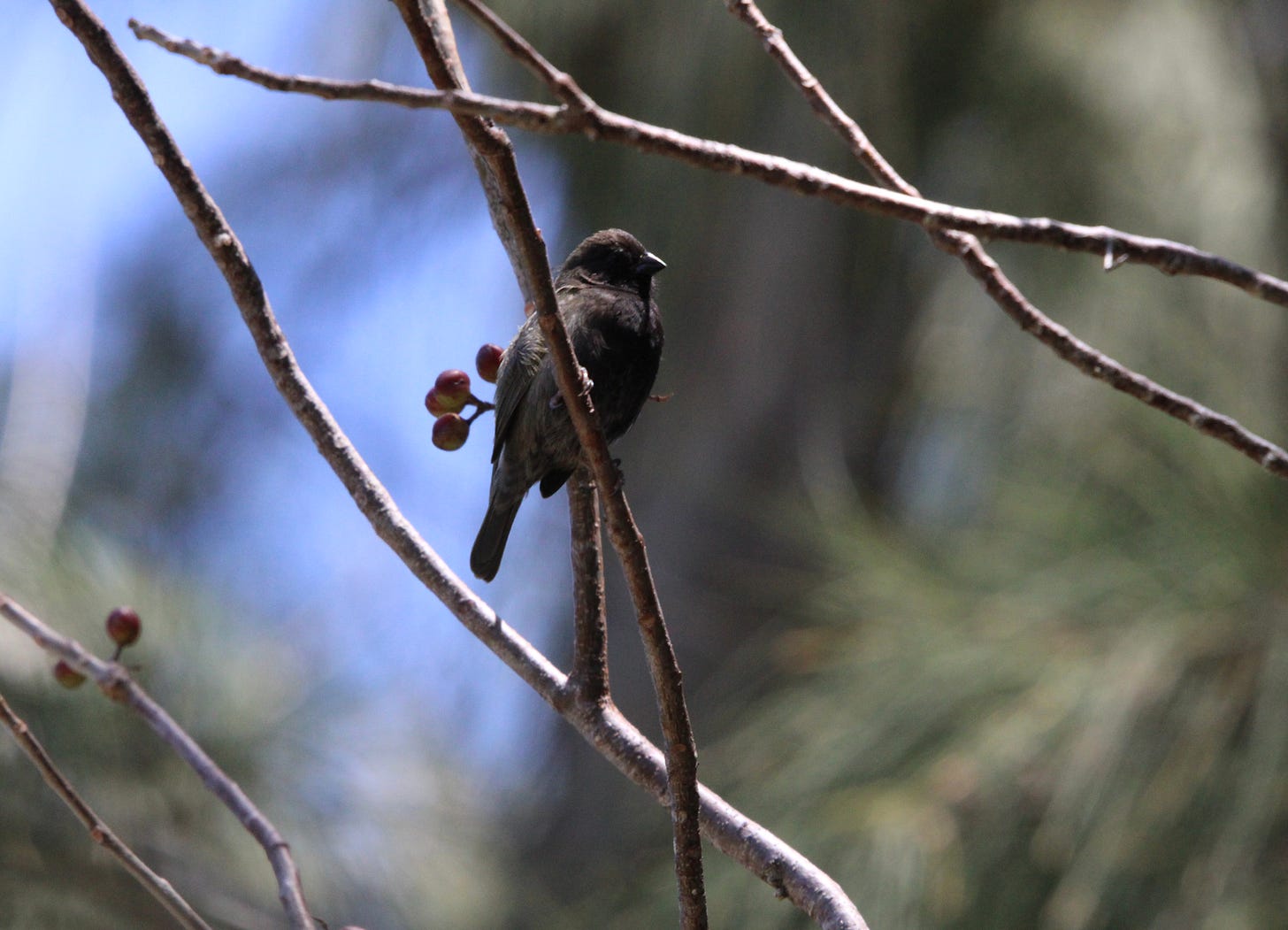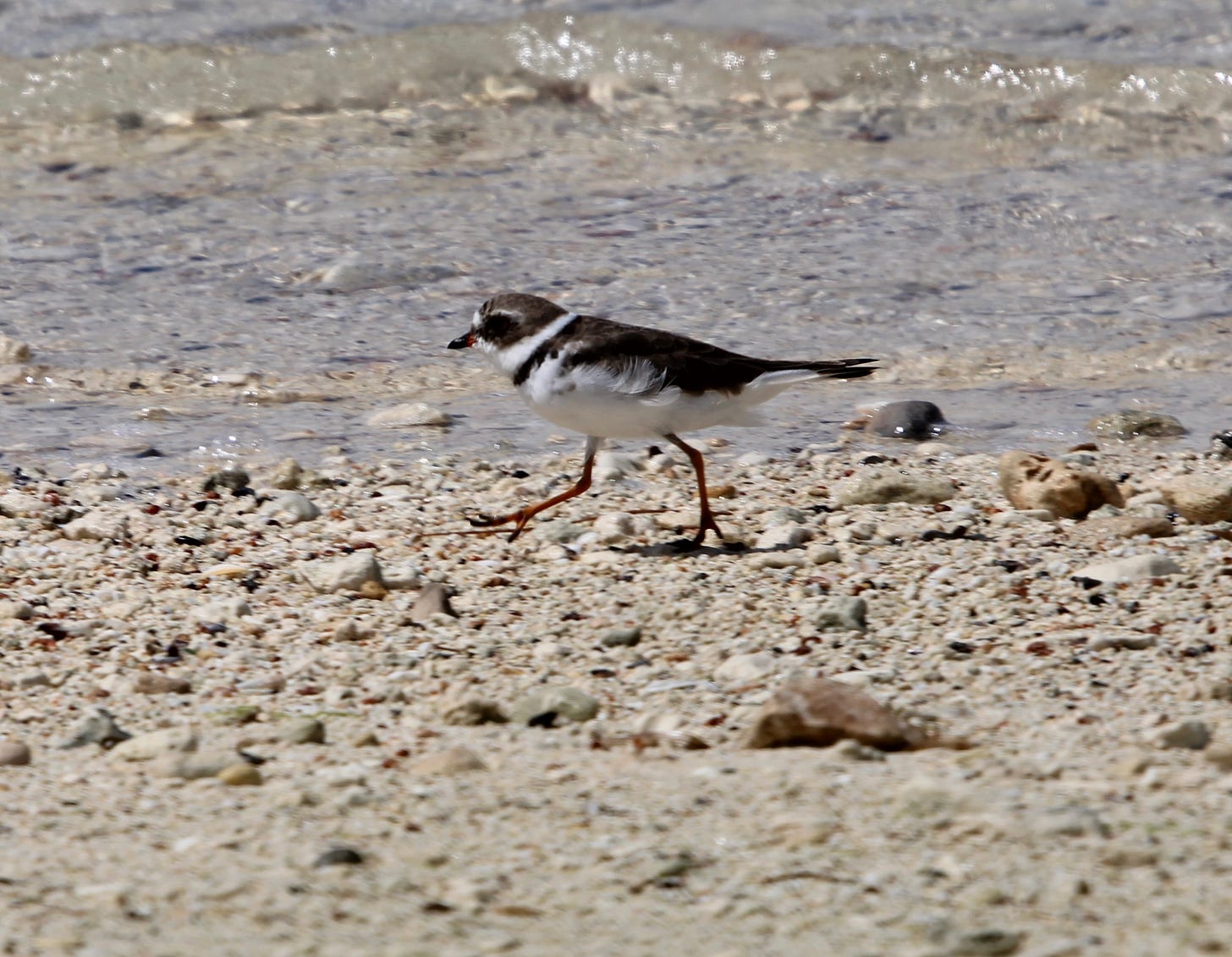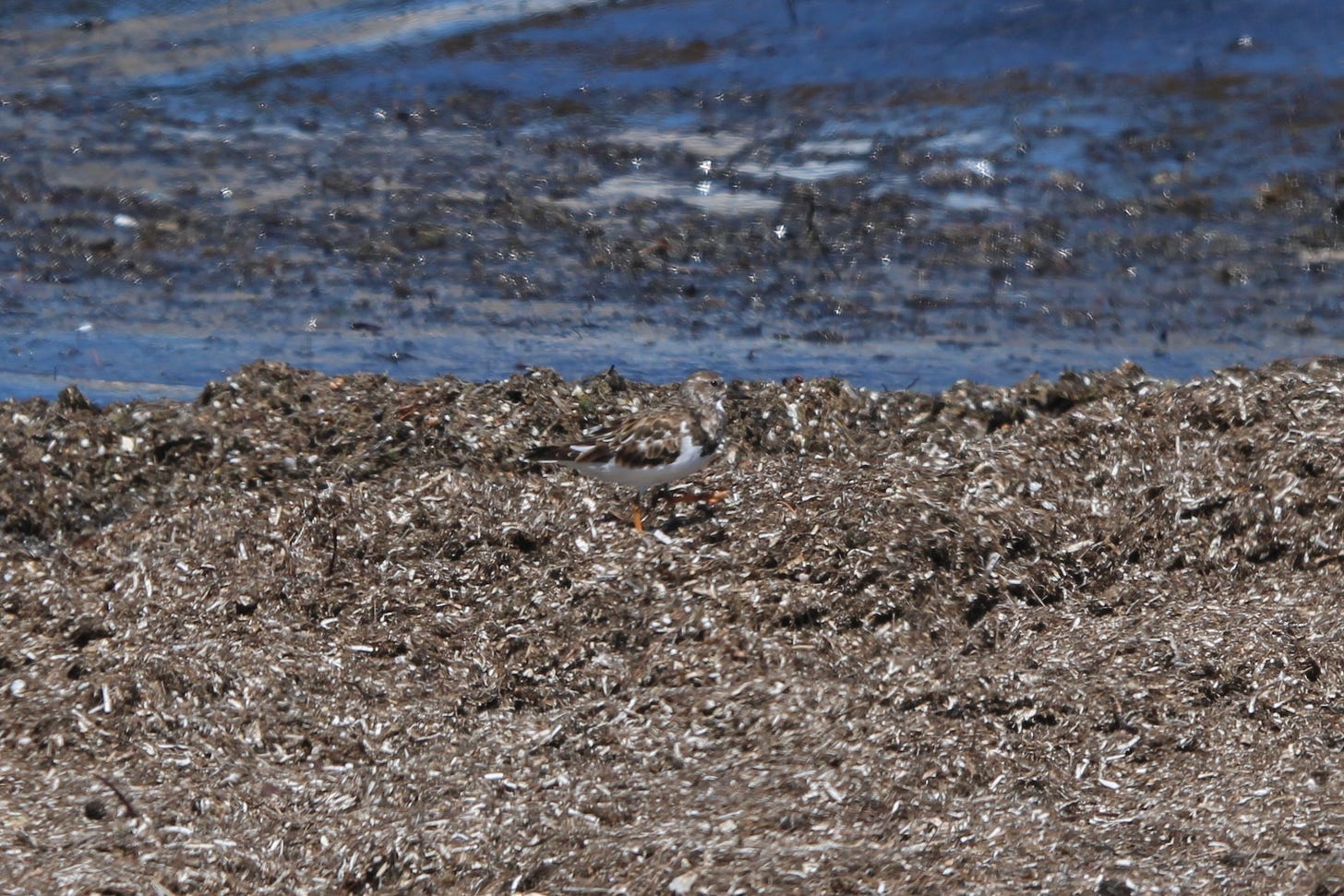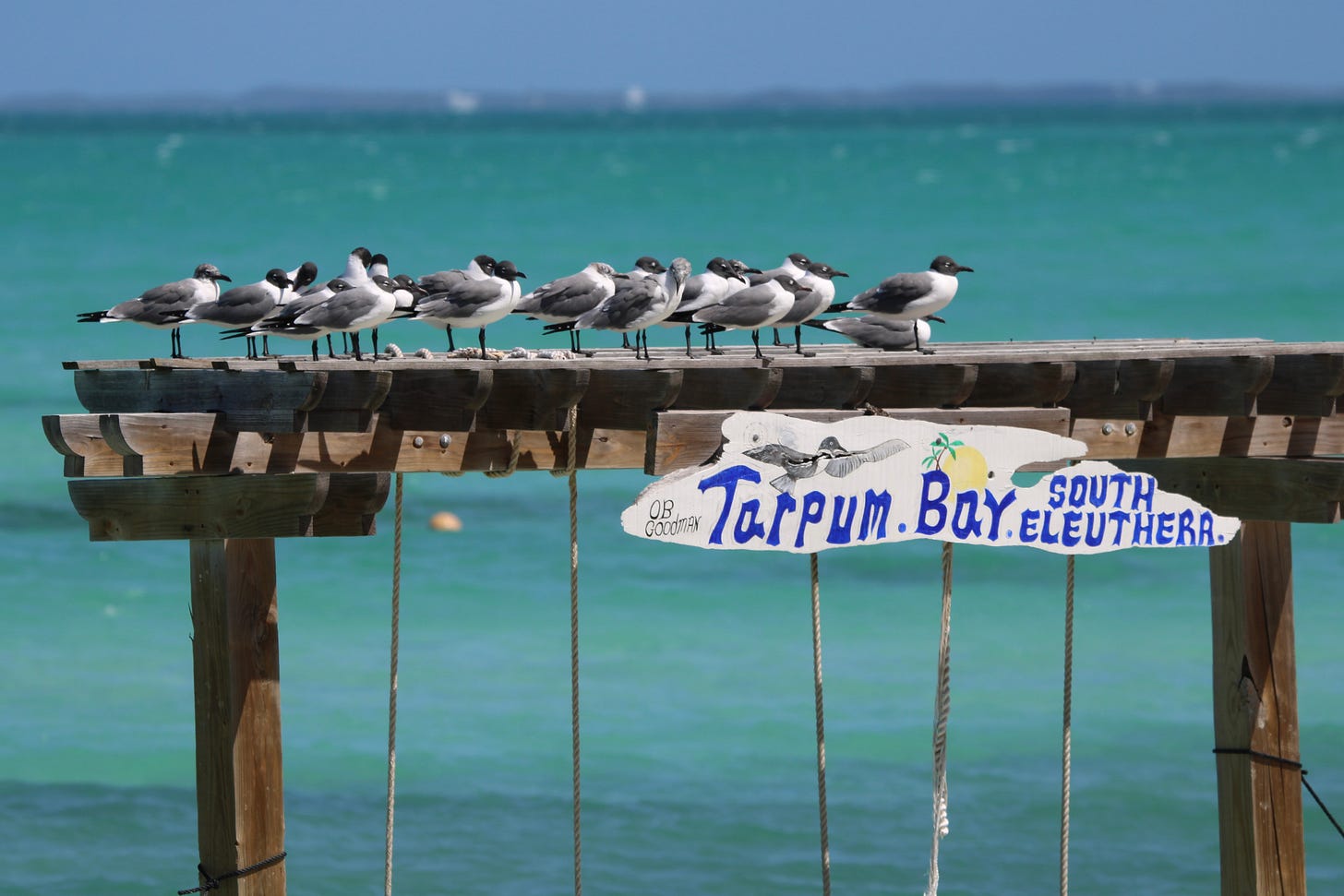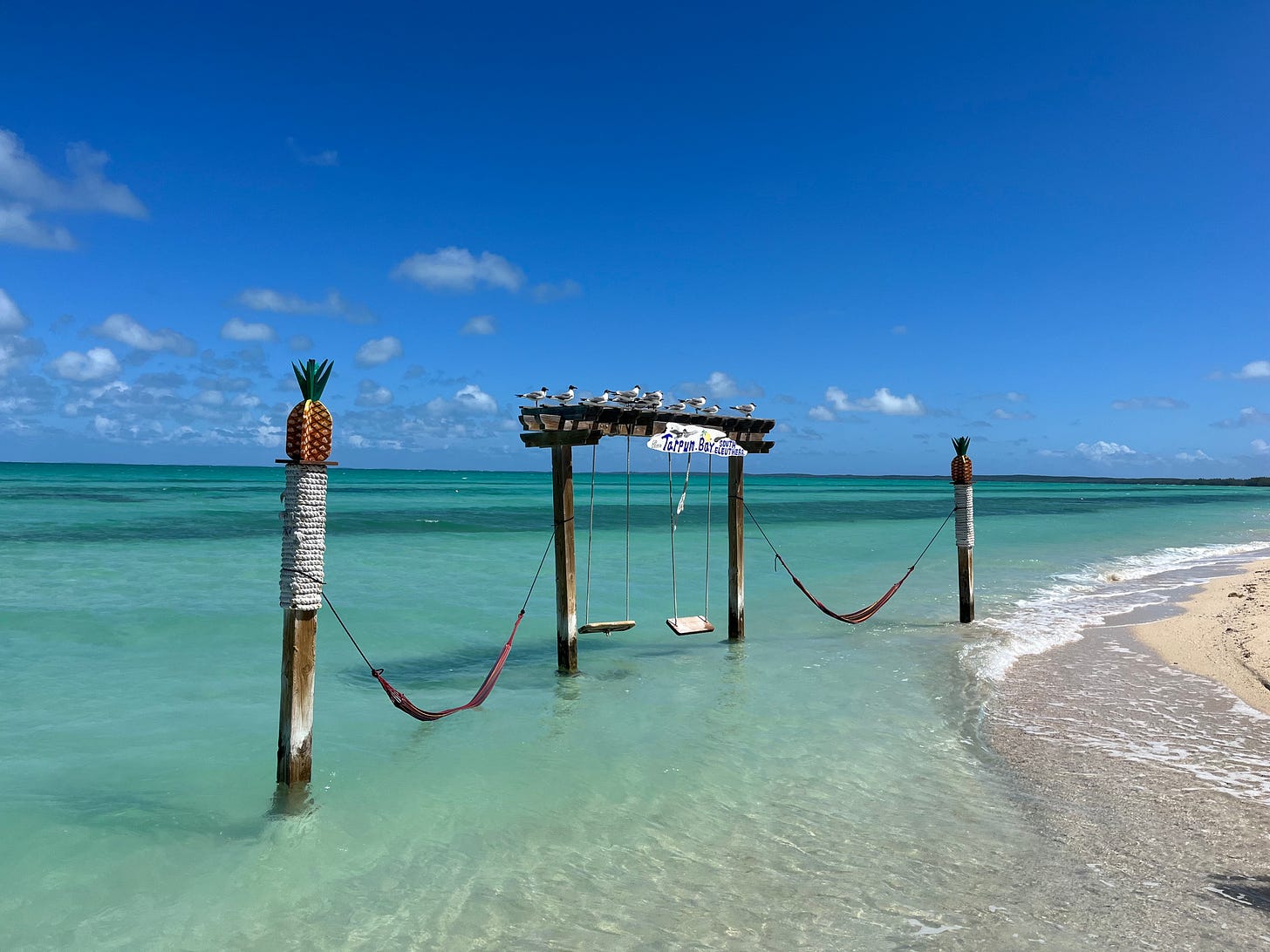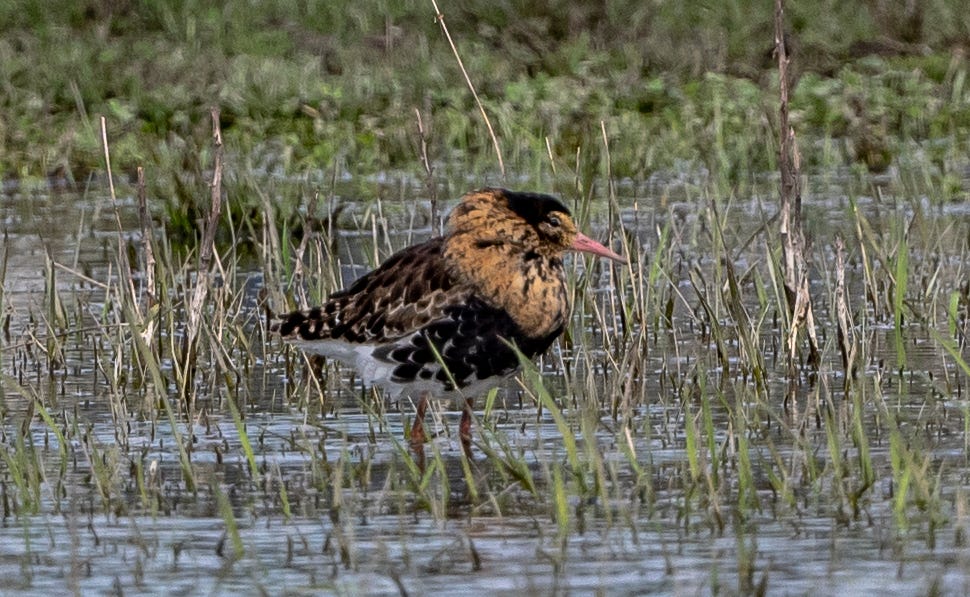The beautiful birds of Eleuthera
A rich avifauna amid a ribbon of limestone on the Great Bahama Bank
The Bahamas archipelago is a set of 700 or so islands left behind when ocean waters receded thousands of years ago. The island of Eleuthera is the eight largest island by land mass—a narrow ribbon more than 100 miles long—though relatively well-populated (if you consider 10,000 people well-populated). Here’s what Eleuthera looks like by satellite:
Some birds on Eleuthera are the same birds we have up here in the Midwest. But many other birds are not the same at all—in fact some species only call the Bahamas home.
Here’s a look at some recent favorites from Eleuthera:
Thick-billed Vireo
Imagine if the White-eyed Vireo was one of our more common birds. That’s the case with the very similar Thick-billed Vireo on Eleuthera. Its chick-why-yer-chick song is heard almost constantly around gardens and wooded areas. The Thick-billed Vireo’s range is confined largely to Cuba and the central Bahamas.
White-cheeked Pintail
Though a land of wide salt ponds and azure seashores, the Bahamas are home to relatively few breeding duck species. The White-cheeked Pintail is an exception. This threatened species resides in the Bahamas and a handful of other Caribbean locales.
Black-faced Grassquit
A teeny finch-like bird, the grassquit is almost ubiquitous around brushy areas and wooded edges. Maybe it’s something like the American Goldfinch of northern climes. This one’s a male and posed just long enough in a gumbo limbo tree for a clear photo.
Semipalmated Plover
I know what you’re thinking, it’s a Piping Plover! Not quite. Semipalmated Plovers are Piping Plovers’ brownish Charadrius cousins. They’re a much more numerous species and spend winters and early spring across the Caribbean.
Ruddy Turnstone
The plumage of many birds has evolved through the eons to match their surroundings and protect themselves from predators. That’s the case with the Ruddy Turnstone in non-breeding plumage, this one found on the Exuma Sound in Eleuthera. Look at the picture long enough, and you’ll see it!
Laughing Gull
The colonial-era settlement of Tarpum Bay, Eleuthera, has this little swing set in the Exuma Sound. The Laughing Gulls seem to love sitting on it, which makes for a fun photo. The swings are a little hard to get to without wading in the ocean!
THE MAGIC STUMP now streaming
In case you missed it, THE MAGIC STUMP, my documentary about a mysterious tree stump and the rare raptors found there, is now available to purchase or rent via Vimeo. The film tells the story of the stump over 10 years and how three birders follow the movements of the birds there. Starting in September 2022, the initial run of screenings included more than a dozen in theaters, nature centers, and libraries all across the state. Hoping that the film will air on public television in portions of Illinois very soon.
The Devil’s Element
Best-selling author Dan Egan joined Howard Learner of the Environmental Law and Policy Center for a virtual conversation on Wednesday about Egan’s new book, “The Devil’s Element.” Thematically this book has quite a bit in common with my newest film, FLUDDLES, which is due out in the fall. The book traces the environmental impacts of phosphorus—which has long been used as fertilizer—and the havoc it has wreaked on ecosystems (particularly in the Midwest). I’ve embedded the video above, it’s worth watching the 45-minute conversation.
TWiB Notes
A wise man once told me never to get into advanced gull identification. “You’ll drive yourself crazy,” he said. That is how I feel with regard to the issues around wind energy. On the one hand, we need renewables if we’re to combat climate change and continue to be massive consumers of energy as a society. On the other hand, it is proven that wind farms can have devastating impacts on migrating and nesting birds, especially raptors. That issue didn’t come up in Block Club Chicago’s piece about a state measure that could lead to a wind farm in Lake Michigan. The piece rightfully focused on another key aspect of clean energy: creating jobs and creating jobs for Black and brown communities at that. At the federal level, the American Bird Conservancy is advocating for “bird-smart” wind energy, so there may be a path that protects birds while advancing wind power. But this is bound to be a polarizing issue when it comes to where the wind turbines go along our relatively small patch of coastline…..The Bird Conservation Network (BCN) is actively recruiting new monitors for 2023 and beyond, adding to its long term (2023 being the 25th year) BCN Survey database. This important community science project relies on birders with sufficient experience to record evidence of species presence during the June and early July breeding season…..The Chicago Ornithological Society is seeking volunteers for the Chicago Nighthawk Project for this season. Volunteers commit to monitoring four points after sunset on three separate nights between the dates of June 11 and July 1. No prior experience or knowledge of nighthawks is required to participate.
Parting shot
The first major fluddle rarity of the season: a male Ruff found in Boone County, Ill., last week. Ruffs are medium-sized wading birds of northern Eurasia.




